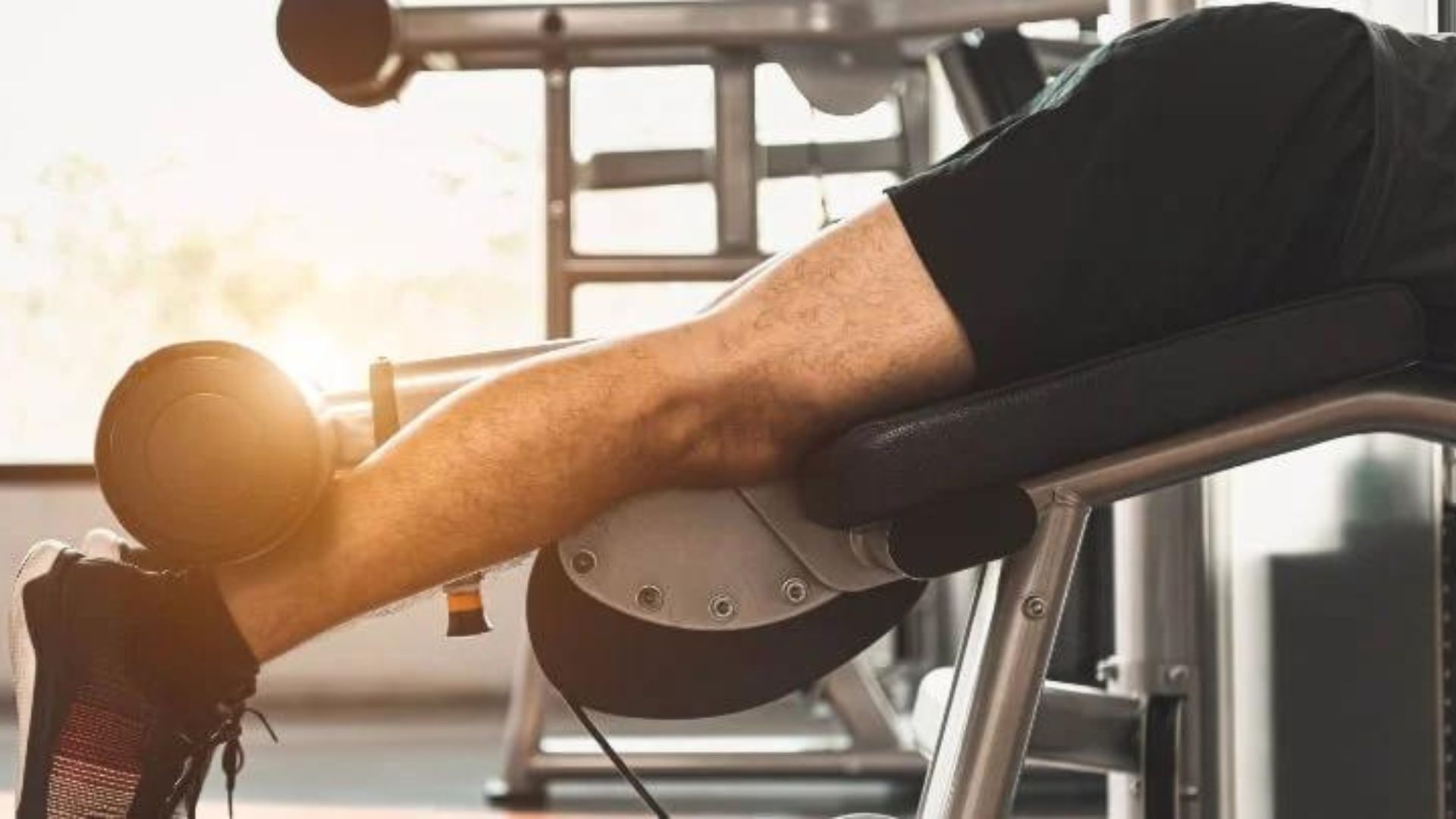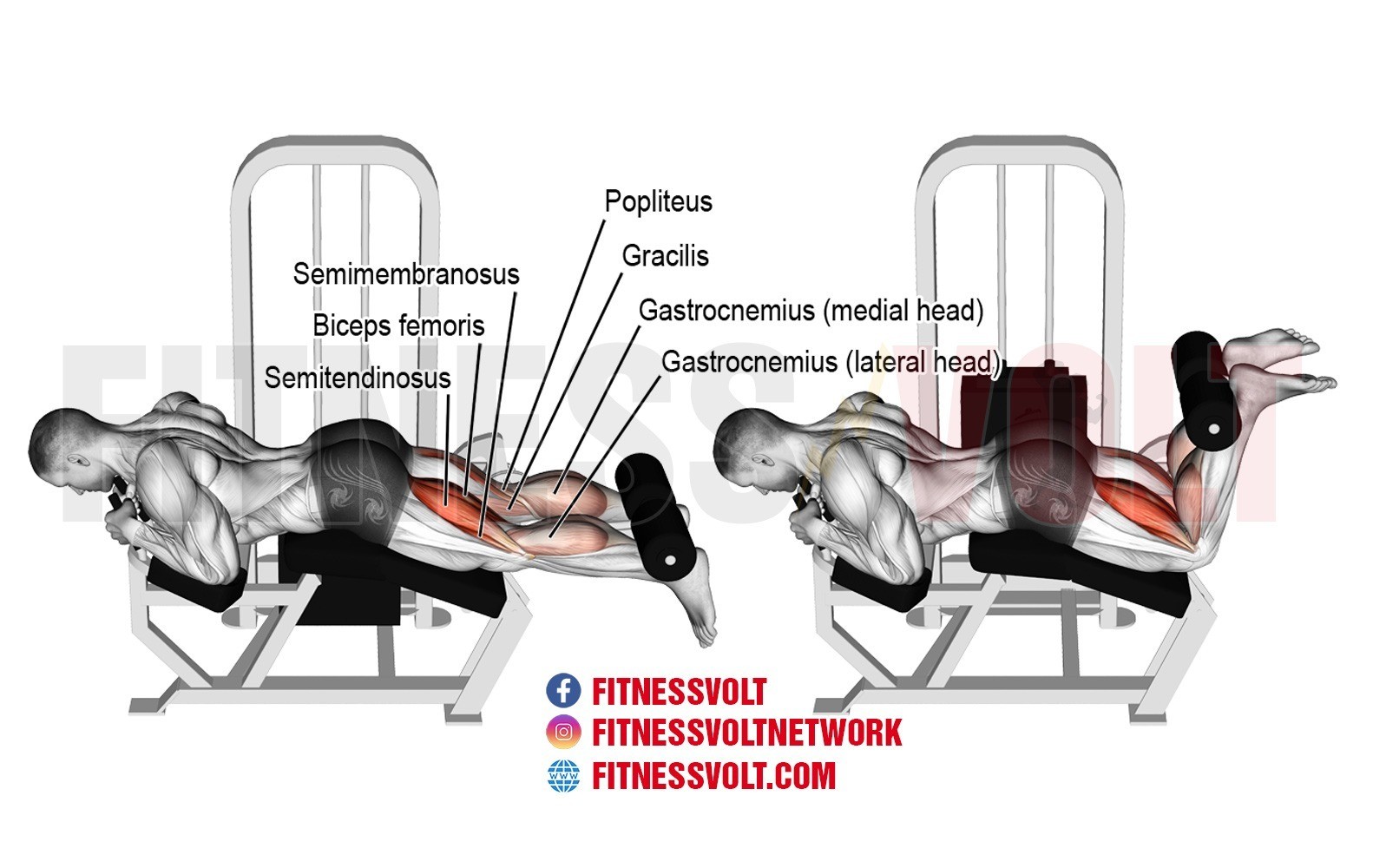

This will place your hips in a more flexed position, loading your hamstrings through a greater length in the bottom position.

Place it under your hips right in the crease. Use a foam roller: Even a rolled up towel will work.Set yourself up tight so your hamstrings become the main focus. Lock yourself in to the bench: Some benches will have a footrest you can grab others will have a seat you can hang on to.But with a decline bench, the moment arm is a little longer when you reach the top, making it a better exercise. With a flat bench you'll feel a quicker loss in muscle tension as you raise your heels up. As you raise the dumbbell to the top, the moment arm shortens and the weight feels lighter. Consider mechanics: Due to gravity and leverage factors, the dumbbell load is greatest towards the bottom position.Use a decline bench: Anywhere from a 10 to 30 degree decline will help keep your hamstrings under tension through the greatest range of motion.Time course for strength and muscle thickness changes following upper and lower body resistance training in men and women. American College of Sports Medicine Position Stand: quantity and quality of exercise for developing and maintaining cardiorespiratory, musculoskeletal, and neuromotor fitness in apparently healthy adults: guidance for prescribing exercise. Garber CE Blissmer B Deschenes MR, et al. American College of Sports Medicine Position Stand: progression models in resistance training for healthy adults. Conceptual framework for strengthening exercises to prevent hamstring strains. Sprint acceleration mechanics: the major role of hamstrings in horizontal force production. on behalf of the American College of Sports Medicine. Hamstrings muscle size can be more effectively increased by seated than prone leg curl training, suggesting that training at long muscle lengths promotes muscle hypertrophy, but both are similarly effective in reducing susceptibility to muscle damage.Ĭopyright © 2020 The Author(s). None of the changes significantly differed between Seated-Leg and Prone-Leg at any time points. Decreases in 1RM were also greater in Control-Leg (e.g., seated/prone 1RM at 24 h: -12%/-24%) than Seated-Leg (0%/-3%) and Prone-Leg (+2%/-5%).

Part 2: After eccentric exercise, Control-Leg had greater increases in T2 in each hamstring muscle (e.g., semitendinosus at 72 h: +52%) than Seated-Leg (+4%) and Prone-Leg (+6%). Part 1: Training-induced increases in muscle volume were greater in Seated-Leg versus Prone-Leg for the whole hamstrings (+14% vs +9%) and each biarticular (+8%-24% vs +4%-19%), but not monoarticular (+10% vs +9%), hamstring muscle. MRI-measured transverse relaxation time (T2) and 1RM of seated/prone leg curl were assessed before, 24, 48, and 72 h after exercise. Part 2: Nineteen participants from part 1 and another 12 untrained controls (Control-Leg) performed eccentric phase-only leg curl exercise at 90% 1RM, 10 repetitions per set, 3 sets for each of the seated/prone conditions with each leg. Magnetic resonance imaging (MRI)-measured muscle volume of the individual and whole hamstrings was assessed pre- and posttraining. Part 1: Twenty healthy adults conducted seated leg curl training with one leg (Seated-Leg) and prone with the other (Prone-Leg), at 70% one-repetition maximum (1RM), 10 repetitions per set, 5 sets per session, 2 sessions per week for 12 wk. We investigated the effects of seated versus prone leg curl training on hamstrings muscle hypertrophy and susceptibility to eccentric exercise-induced muscle damage.


 0 kommentar(er)
0 kommentar(er)
